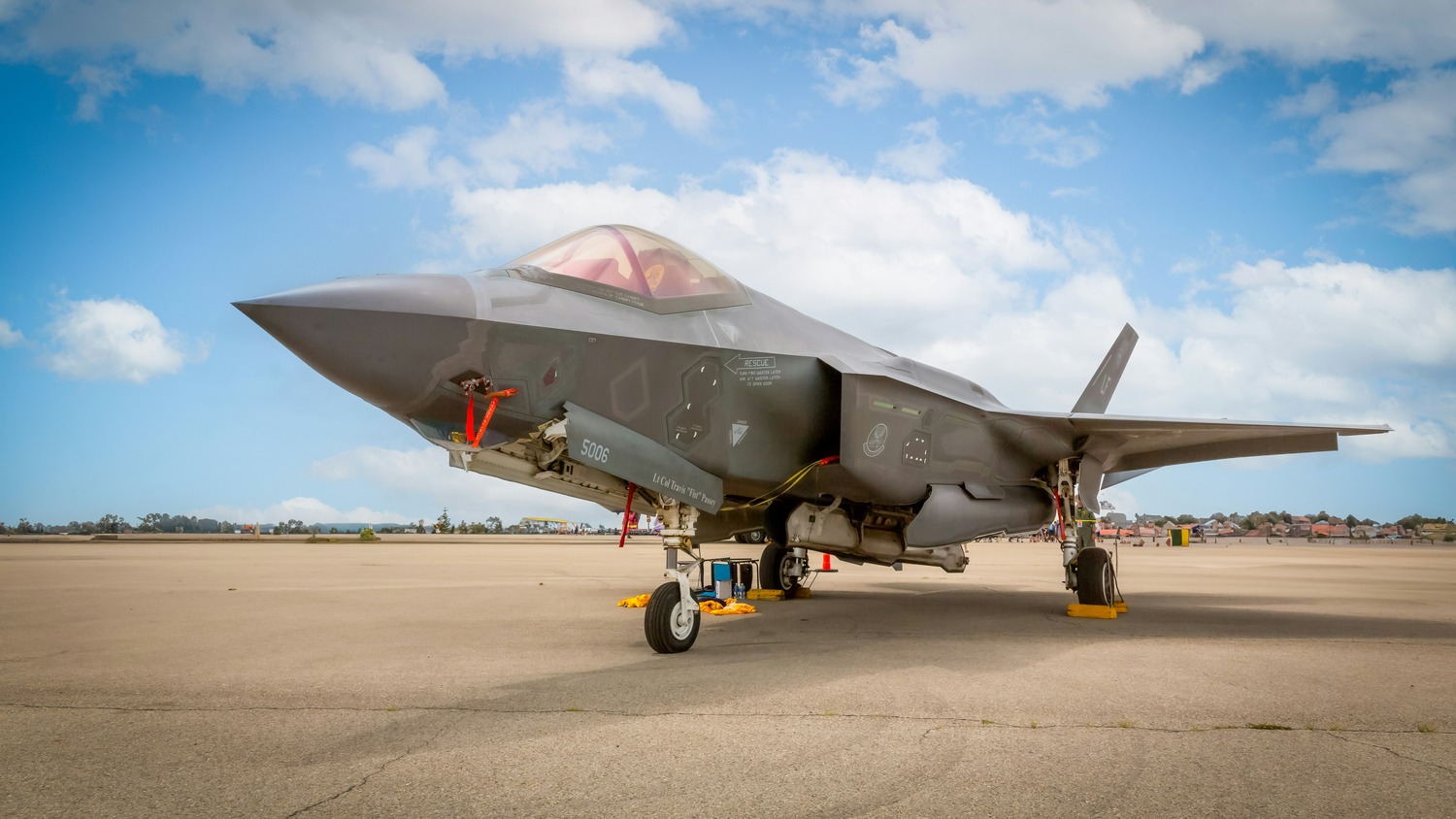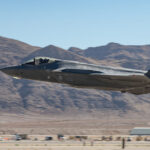The Mitchell Institute today rolled out a 72-page policy paper that warns of a shrinking, aging U.S. fighter force and calls for an urgent production surge of F-35As equipped with Technology Refresh 3 and Block 4 upgrades. The full analysis is presented in the Mitchell Institute policy paper.
Authors Lt Gen Joseph Guastella (Ret.), Douglas Birkey, and Lt Col Eric Gunzinger (Ret.) note that the Air Force now fields 2,176 fighters – less than half the Cold-War peak – and many designs date to the 1970s.
Average ages tell the same story: F-15C/D airframes sit at 38 years; F-16C/D jets approach 32. Structural wear, rising maintenance hours, and poor mission-capable rates expose a hard limit that no extra depot time can erase.
The paper argues that an assertive China, a revanchist Russia, and two nuclear upstarts, Iran and North Korea, give Washington no safe flank. Meeting those parallel demands requires both capability – stealth, sensing, and network power – and capacity, measured in squadrons ready to fly tonight.
F-35A is cast as the pivot. At roughly $80 million a copy, it offers an affordable path to mass while matching fifth-generation survivability and data-fusion standards.
Technology Refresh 3 brings a new integrated core processor 25 times faster than the current unit, expanded memory, and an advanced cockpit display. Block 4 then layers more than 80 incremental upgrades, from expanded electronic attack options to a wider weapon set.
A test F-35A flew with TR-3 hardware at Edwards AFB on Jan. 6 2023, proving the airframe can host the new backbone.
Mitchell analysts judge the program to be at an inflection point: every dollar committed from fiscal 2024 forward will procure jets wired for TR-3 and ready to absorb Block 4 apps as code completes.
The paper lists ten actions for Pentagon buyers and lawmakers. The most important ones:
- Raise the F-35A buy rate above 100 jets per year.
- Guard TR-3 and Block 4 schedules; avoid new slips.
- Draft a force-sizing construct tied to the National Defense Strategy, not today’s budget ceiling.
- Use cost-per-effect metrics rather than flyaway price when judging aircraft.
- Add industrial elasticity so surge output is possible if conflict looms.
House Tactical Air and Land Forces members Rob Wittman and Donald Norcross echoed the capacity alarm last year, pointing out that the service planned to retire 600 fighters while buying only 246 replacements – “a 400-jet gap no briefing can hide,” Wittman said.
Service leaders frame the answer as “4 + 1”: F-35, F-15EX, F-16, F-22, plus a sunset A-10 attack fleet. NGAD will take the air-superiority mantle after 2030, yet even Secretary Frank Kendall concedes each NGAD airframe will cost “more than twice” an F-35, limiting numbers to about 200.
That price reality pushes the F-35 to the center of any credible 2030 order of battle. The platform supplies stealth to open the lane, sensors to map it, and data links to share the view – critical traits once confined to boutique squadrons that now must scale across theaters. A recent sniper pod upgrade further enhances F-35 sensor integration with fourth-generation aircraft.
Industrial policy forms the second half of the argument. The study urges Congress to back added production tooling, spare-part buffers, and workforce pipelines before a crash build proves impossible.
Human capital matters as well. The Air Force enters summer 2023 about 1,900 pilots short, most of them fighter-qualified. Recruiting and retention incentives have slowed the bleed but not closed the gap.
Without new cockpits, trainees cannot absorb; without trainees, new cockpits sit idle. The paper therefore pairs aircraft buys with surges in training capacity and urges expanded use of Live-Virtual-Constructive tools to stretch syllabus hours.
Beyond budgets, the authors press for testing reform. Perfection, they write, can no longer be the enemy of operationally “good enough” when the alternative is entering combat with jets the enemy already outranges.
WHAT’S NEW – March 2025
Twenty-one months on, the forecasted merge between capability and capacity remains in sight yet has slipped right by the nose. TR-3 software integration proved harder than advertised; Lockheed Martin halted routine deliveries for almost a year while coders chased stubborn stability bugs.
A phased workaround began last July. The Joint Program Office now accepts jets with only a training configuration, planning to inject full-up code in depot visits once the final build clears flight-test gates later this summer.
That stop-gap slowed 2024 production to 98 aircraft, but Lockheed forecasts a rebound past the 150-jet mark in 2025 if the upgrade locks by September. Related concerns have also been raised about delays and low availability rates across the broader fleet.
Congress, unconvinced, trimmed the fiscal 2025 request from 68 F-35s to 58 and fenced off $1.3 billion until TR-3 reaches field-ready status. The cut widens the capacity trough Mitchell analysts flagged in 2023.
GAO piled on in a March report that pegs Block 4 cost growth at more than $16 billion and warns schedules remain “fluid” until TR-3 stability is proven in operational testing, as detailed in the latest GAO report.
Air-dominance planning also shifted. The outgoing administration drafted the FY-26 placeholder budget without NGAD funding. Secretary Kendall told reporters he will fight to restore the line, calling air-superiority “non-negotiable,” even at a unit price north of $180 million.
Meanwhile, allies press on. Denmark accepted its fourteenth F-35A last week and confirmed intentions to replace legacy F-16s by 2028, signaling continued confidence in the program despite U.S. delays.
The pilot gap has not closed. RAND estimates still show an overall shortage near 1,900 aviators, and readiness data released this month reveals a mission-capable rate of just 62 percent across the fleet – the lowest on record.
To buy breathing room, Air Combat Command now rotates fifth-generation squadrons through Kadena AB under six-month “heel-to-toe” deployments, substituting presence for permanence until a larger fighter roster returns to the Pacific.
On the industry side, officials credit advance-purchase agreements for micro-electronics and composite skins with easing supply-chain choke points, yet shortages of experienced software engineers slow verification work at the system-integration labs.
Still, planners see momentum. The first combat-coded TR-3 jet is scheduled for delivery to Hill AFB in December; squadron-level software drops will follow on a quarterly cadence, putting Block 4 weapon releases into live sorties by mid-2026. Jets already in service may also undergo targeted upgrades, as the Air Force weighs whether to retrofit older F-35s or invest in new production.
In short, neither the capability vector nor the capacity vector has changed direction, but the closure rate is lower than scripted in 2023. The window for risk-free correction keeps shrinking, and every week lost on the factory line echoes across readiness boards two years later.
REFERENCE SOURCES
- https://avweb.com/aviation-news/fighter-pilot-shortage-threatening-readiness/
- https://www.mitchellaerospacepower.org/accelerating-5th-generation-airpower-bringing-capability-and-capacity-to-the-merge/
- https://www.mitchellaerospacepower.org/app/uploads/2023/06/Accelerating_Fifth_Generation_Airpower_Policy_Paper_43-FINAL.pdf
- https://www.f35.com/f35/news-and-features/f35-first-flight-with-TR3.html
- https://www.gao.gov/products/gao-24-106909
- https://www.defenseone.com/business/2025/03/f-35-get-new-software-summer-theres-no-date-yet-planned-full-upgrade/403536/
- https://dsm.forecastinternational.com/2025/05/09/lockheed-martin-on-pace-for-record-f-35-deliveries-in-2025/
- https://www.airandspaceforces.com/ngad-kendall-2026-budget/
- https://www.defensenews.com/air/2024/12/10/defense-bill-would-cut-f-35-purchases-in-2025-delay-deliveries/
- https://www.zona-militar.com/en/2025/05/24/the-royal-danish-air-force-continues-to-incorporate-fifth-generation-f-35-lightning-ii-fighter-jets/



